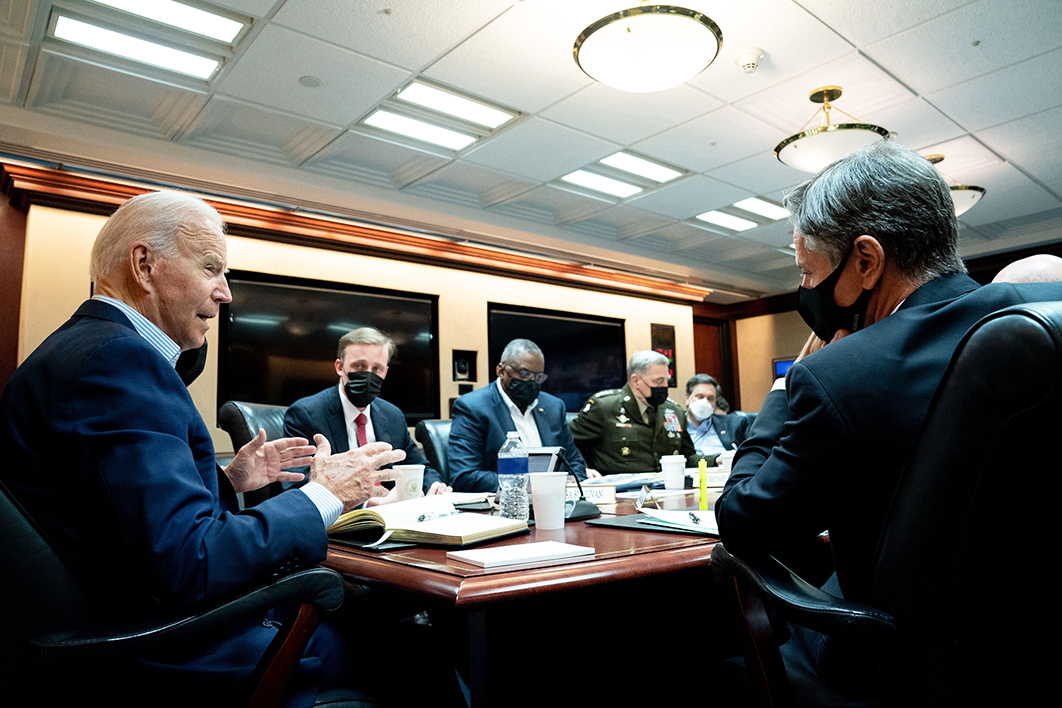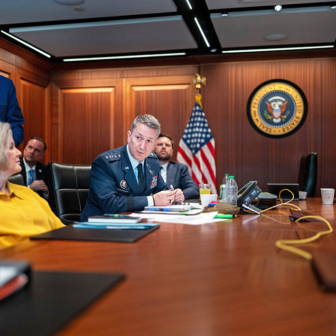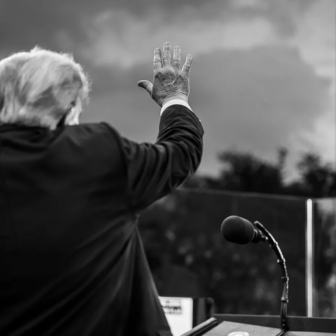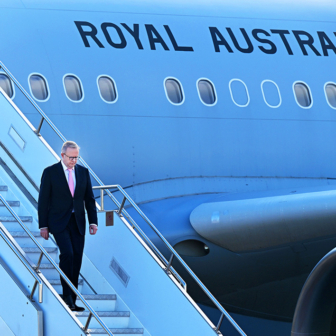Always part of the backdrop to US military action are American perceptions of the second world war as the “good war.” Righteous force compelled unconditional Nazi surrender and then supported successful democratic state-building in West Germany and Japan. Along the way, Washington greatly enhanced its global position and came to see itself as leader of the free world.
As international politics turned more murky, though, the emerging conflicts didn’t fit the 1945 template. An early example was the Korean war of 1950–53. There, Democrat president Harry Truman viewed the North’s invasion of the South as part of a systematic communist challenge to world order. He sent US troops to defend the South — but then ordered them not to achieve total victory.
Truman was fearful that a more decisive campaign would expand across the Chinese border, perhaps triggering a third world war with the Soviet Union. Instead, a restricted but protracted conventional conflict destroyed the Korean peninsula and claimed the lives of more than 30,000 American troops. South Korean independence was preserved, but the aggressors in the North remained in place, a stalemate unfamiliar and distasteful to American voters.
Strategy became a political hot potato. Accusing Democrats of being soft on communism, Dwight Eisenhower’s incoming Republican administration adopted a policy of “massive retaliation.” If communists tried another attack, they wouldn’t be permitted to set the terms of the fight. Communist encroachments, it was proclaimed, would be met by an all-out nuclear response.
By the 1960s, John F. Kennedy’s Democrats were arguing that using nuclear weapons to stop limited communist advances in the developing world would be suicidally reckless given the Soviet nuclear build-up. Kennedy offered a more flexible and innovative approach to combating leftist insurgencies in Southeast Asia: rather than the sledgehammer of nuclear bombs, the scalpel of special forces.
But the scalpel proved inadequate to defeat communists in South Vietnam. The next president, Lyndon Johnson, desperate to prove American credibility to friend and foe, gradually escalated the violence, eventually deploying hundreds of thousands of troops and dropping millions of tons of bombs. That approach also failed.
Eventually, in the early 1970s, president Richard Nixon extricated US ground forces from an increasingly unpopular conflict. To cover the withdrawal he upped the bombing and adopted a policy of “Vietnamisation,” bloating the South Vietnamese military with more equipment. That failed too, with the South’s large army unable or unwilling to defend the Saigon regime. Aside from the devastation of Vietnam, the costs included the lives of some 50,000 American soldiers.
Defeat fuelled public cynicism and increased isolationist sentiment. With America having supposedly become battle-shy — the Vietnam syndrome, as it was labelled — Washington had a credibility problem: who would now believe in its readiness to defend its allies and interests? The risk, it believed, was that the global chessboard would be abandoned to Moscow.
Partly to deal with that worry, the United States invaded small-fry Grenada (1983) and Panama (1989). These morale-boosters demonstrated how Washington could avoid the mistakes of Vietnam while keeping force as a politically viable policy instrument. Pentagon officials codified the criteria for prudent armed intervention: wide political support; clear objectives serving the national interest; readiness to use decisive force; avoidance of protracted engagement; and acceptable costs and risks.
Then, in 1991, along came Saddam Hussein, a villain from central casting, whose aggression fitted America’s post-1945 template of a good war. Hussein’s Iraq ticked all the above boxes, and more. Its invasion of Kuwait provided a just cause as recognised by the United Nations; there was a clear, limited objective (eviction of the Iraqi army); and American generals were granted unfettered use of overwhelming force. Moreover, the military’s success demonstrated Washington’s status as a superpower, with the White House declaring, “We’ve kicked the Vietnam syndrome once and for all.”
But the real world kept presenting messy problems, like peacekeeping and humanitarian operations, that failed to match the preferred Pentagon model. They are too numerous to discuss all of them here, but some stand out. In 1992, after being criticised for inaction, president George H.W. Bush sent troops to protect the UN humanitarian effort in Somalia from local warlords. By intervening in the anarchy, US forces became a participant in a civil war; the mission creep led to the Black Hawk Down battle of 1993, in which eighteen American soldiers were killed. President Bill Clinton reacted by withdrawing, creating a perception that the United States had been thwarted by a rabble.
Americans had had enough. Sending troops to help apparently ungrateful foreigners in intractable squabbles became politically unsustainable. Washington would be damned if it did, and damned if it didn’t. It’s one reason why Clinton stood back as the 1994 Rwandan genocide unfolded.
Clinton later latched on to long-range precision munitions as a way of continuing to use force while minimising the domestic political costs. In 1998 he fired cruise missiles at Sudan, Afghanistan and Iraq in half-hearted punitive strikes that didn’t seem to achieve anything. The strategy took a more serious turn in the 1999 humanitarian crisis in Kosovo. Contrary to expert predictions, the US air force (with NATO) managed to bomb the Serbian government into submission without “boots on the ground.”
Two years later, the 9/11 terror attacks on New York and Washington reset strategy once again. For the first time since the 1940s, American troops were used to defend the homeland. The 2001 invasion of Afghanistan hammered al Qaeda and overthrew the supporting Taliban government.
But president George W. Bush’s framing of the war on terror as all-encompassing and open-ended had been ill-conceived. He also accepted the neo-conservative fantasy that 9/11 presented an opportunity to remake the Middle East. The result was strategic incontinence and the disastrous 2003 invasion of Iraq, and all that went with it. To borrow an expression from defense secretary Donald Rumsfeld, “stuff happened.”
The Iraq folly exacerbated anti-American feeling in the Muslim world and diverted Washington’s attention from Afghanistan at a critical time. The Taliban regrouped, leaving Washington with a “now what?” moment. For years American officials switched between counterterrorism (killing remnant al Qaeda operatives), counterinsurgency (suppressing Taliban guerillas) and state-building. In practice, this meant American blood and treasure underwrote the corrupt Afghan regime. The signposts to failure became well known in Washington, but were only faced up to when Joe Biden won office and followed through on a promise to withdraw.
The post-Afghanistan chapter of US intervention doesn’t begin with a blank sheet. For example, the CIA and special forces continue to hunt Islamist terrorists in Africa. America remains key to NATO’s containment of Russia as well as the deterrence of North Korea. These opponents of the West, and others such as Iran and China, will be reaching their own conclusions about the implications of the shambolic collapse of the American position in Kabul. Some will be considering whether to test Biden’s resolve.
Allies who haven’t weaned themselves off American power will worry about either being abandoned if Washington loses interest or being dragged into unwanted conflict as it reasserts its superpower status. Canberra will fret about Washington either backing away from the South China Sea or trying too hard to prove itself.
Perhaps, after the dust settles, US credibility might not be as badly damaged as many suppose. After all, Biden didn’t back down on his Afghanistan policy; he persisted, despite considerable political heat. And, in theory, the move out of that country allows Washington to reinforce its position in the balance of power and frees it to more assertively police its revised version of world order. •




